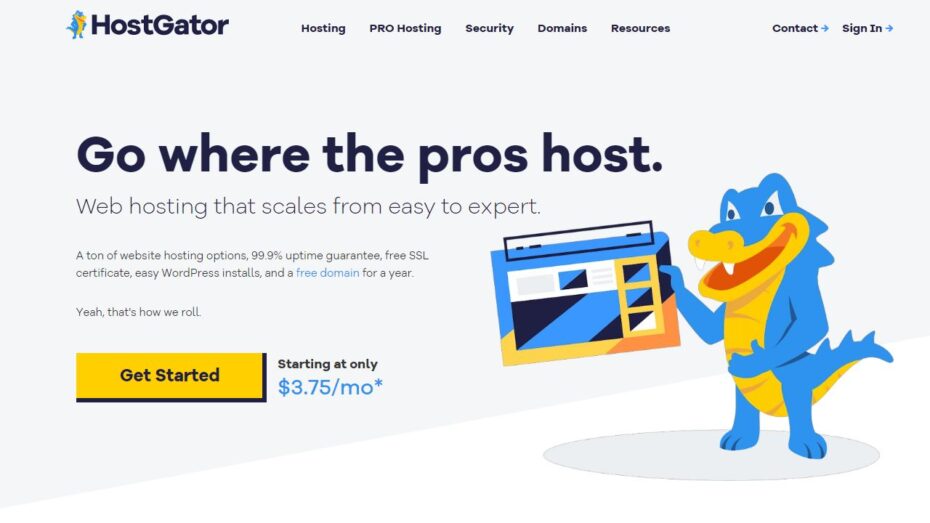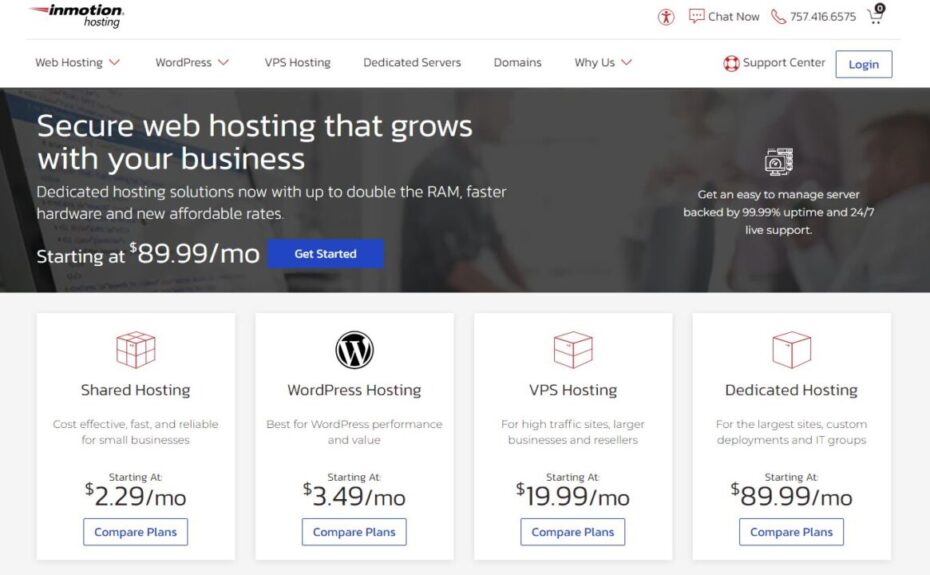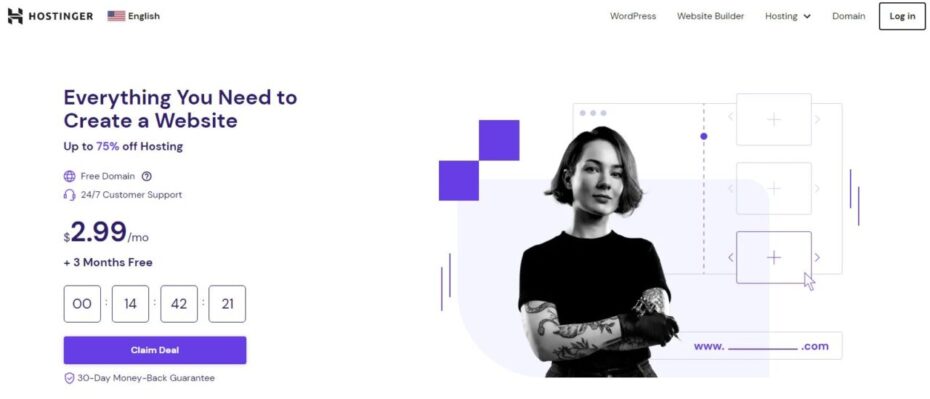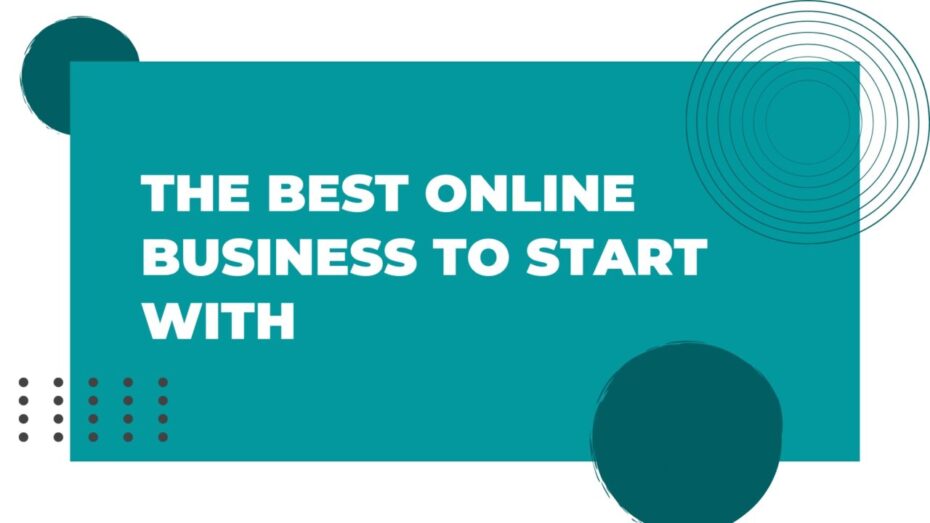Disclosure: This post contains affiliate links, which means that if you click on them and make a purchase, I will receive a commission. Read our Disclaimer for More.
Are you considering starting a blog but unsure where to begin or how it can actually be profitable? Do you wonder what steps are involved in launching a successful blog that not only captures the interest of readers but also generates income? If these questions resonate with you, you’re in the right place.
Starting a blog is an exciting venture that combines creativity with business strategy. From my perspective, it’s crucial to approach blogging with a clear plan and an understanding of the key elements that will help your blog thrive. Most importantly, the journey of blogging should be enjoyable and rewarding, not just from a financial standpoint but also as a personal accomplishment.
Stay tuned as we delve deeper into each step of starting your blog, ensuring that every action you take contributes to your ultimate goal of making money while sharing your knowledge and passions with the world.
Understanding the Basics Before You Start a Blog
Did you know that over 600 million blogs exist on the internet today? With the digital landscape constantly expanding, starting a blog can seem like venturing into a crowded marketplace. However, the key to standing out lies in grasping the fundamentals and setting a solid groundwork before you start a blog.
The journey begins with a strong understanding of what blogging entails. This includes not just writing and publishing content, but also engaging with your audience, optimizing your content for search engines, and updating your blog with consistent, high-quality posts. My advice is to approach blogging with a commitment to learning and adaptation, which will allow you to thrive in this dynamic environment.
Additionally, I recommend familiarizing yourself with the technical aspects, such as choosing the right blogging platform and understanding basic SEO. These tools are essential, as they help maximize your blog’s potential reach and visibility. From my perspective, mastering these basics not only enhances your blog’s operational efficiency but also improves user experience, making your blog more attractive to new visitors.
What You Need to Know About Blogging
Blogging is much more than writing; it’s a comprehensive communication tool. From my point of view, every aspiring blogger should understand that blogging involves a mixture of content creation, marketing, and community building. Speaking personally, I strongly believe that knowing your audience’s preferences and how to engage them is crucial for any successful blog.
Creating compelling content that resonates with readers is the cornerstone of blogging. It’s not just about what you want to say, but how it adds value to your audience. According to industry experts, blogs that solve problems or answer key questions tend to build a loyal readership faster.
Furthermore, consistency in publishing and interaction with readers through comments and social media can significantly enhance your blog’s community. My suggestion is to always be responsive and open to feedback, as it will guide you in refining your blogging strategy and content.
Choosing the Right Niche for Maximum Profit
Choosing a niche is pivotal because it determines the focus of your blog and the audience you’ll attract. In my opinion, the right niche should be at the intersection of your passions and a gap in the market. This approach not only keeps you motivated but also increases the likelihood of your blog being successful.
From my experience, a well-chosen niche can help you stand out in the crowded blogging world. I would say that it’s essential to conduct thorough market research to identify trends and underserved areas. My recommendation is to focus on niches where you can offer unique insights or solutions that are not extensively covered by existing blogs.
Profitability should also be considered when selecting your niche. I believe that niches with high engagement and spending potential are more likely to generate income through various monetization strategies, such as affiliate marketing, sponsored posts, or digital products.
Step-by-Step Guide to Start a Blog
Starting a blog can be a thrilling adventure, especially when you approach it with a strategic plan. First and foremost, my intention is to outline the essential steps to establish a strong foundation for your blog. This process involves careful planning, selecting the right tools, and committing to providing valuable content consistently. From my perspective, this stage is critical because it sets the tone for your blog’s future growth and its ability to attract and retain an audience.
Furthermore, I suggest taking the time to understand your target audience. Knowing whom you are writing for can significantly influence the tone, style, and content of your blog. My advice is to conduct research on your audience’s preferences, challenges, and habits to ensure your blog meets their needs effectively. This understanding will not only help in creating relevant content but also in making informed decisions about the design and functionality of your blog.
Lastly, consider your long-term vision for the blog. Setting clear goals for what you wish to achieve with your blog can guide your content strategy and help you remain focused. I strongly believe that a well-defined purpose can inspire more structured and impactful blog posts, ultimately leading to a more engaged readership and successful blog.
Selecting a Blogging Platform That Suits You
Choosing the right blogging platform is crucial as it affects everything from the design of your blog to its functionality. From my experience, your choice should depend on your technical skills and the specific features you need. Platforms like WordPress offer extensive customization options and are fantastic for those who have some technical background. Meanwhile, platforms like Blogger or Wix provide more user-friendly interfaces with less customizable options, which might be better suited for beginners.
My recommendation is to prioritize ease of use, support, and scalability when selecting a platform. This ensures that as your blog grows, the platform can accommodate increased traffic and more complex features without a hitch. According to experts, WordPress is often a safe bet for its robust features and scalability, but it’s important to assess whether it aligns with your specific blogging goals and skills.
Additionally, consider the type of content you plan to publish. If your blog will feature heavy multimedia, like videos and podcasts, ensure the platform can support these without complications. From my perspective, a platform that offers good multimedia support and mobile optimization is key in today’s digital age, where much of the audience consumes content on the go.
Domain Name and Hosting: The First Steps to Take
The domain name is your blog’s address on the internet, and choosing the right one is vital as it forms the first impression about your blog. I recommend selecting a name that is not only catchy and memorable but also relevant to your niche. This enhances brand recall and can improve search engine rankings. It’s important to ensure the domain name is easy to spell and pronounce, reducing the chance of traffic loss due to typing errors.
When it comes to hosting, my advice is to choose a reliable provider. Hosting affects your blog’s speed and uptime, which are critical for maintaining a good user experience and SEO rankings. From my point of view, investing in good quality hosting from the start is akin to laying a strong foundation for a house. It might seem like a place to save money, but poor hosting can lead to significant issues down the road.
Moreover, I strongly believe that considering future growth when choosing hosting is essential. Ensure the hosting service can scale as your blog grows. Look for options that offer easy upgrades to more powerful servers and additional resources. From my experience, shared hosting might be enough at the start, but as your traffic increases, you may need to consider dedicated or cloud hosting options to maintain performance.
Designing Your Blog for Success
Just as an architect meticulously designs a building to ensure it is both functional and aesthetically pleasing, designing your blog requires a similar blend of artistry and utility. The design of your blog is crucial because it not only reflects your brand but also influences user engagement and retention. Starting a blog with a clear and attractive design can set you apart from the competition and captivate your audience.
A well-designed blog enhances the user experience by making it easy for visitors to navigate and find content. It’s important to focus on creating a clean layout that organizes information logically and is visually appealing. From my point of view, incorporating intuitive navigation and a professional appearance can significantly impact how new visitors perceive your blog. My recommendation is to always ensure that the design is not overwhelming but complements and enhances the content.
Furthermore, responsiveness is key in today’s multi-device world. I strongly believe that your blog must perform seamlessly across all devices, including desktops, tablets, and smartphones. A responsive design adapts to different screen sizes and orientations, providing a consistent experience for all users. This not only improves user satisfaction but also aids in SEO, as search engines favor websites that are mobile-friendly.
Essential Design Tips to Enhance User Experience
Good blog design is not just about looks; it’s about how easy it is for visitors to interact with your content. The goal is to keep users engaged and guide them naturally through your articles. I recommend using a clean, uncluttered layout with well-defined sections and a harmonious color scheme that reflects the tone of your blog. This approach can help reduce bounce rates and increase the time visitors spend on your site.
Typography also plays a crucial role in how readable and accessible your content is. Choose fonts that are easy to read and size them appropriately for headings and body text. According to design experts, good typography enhances the reading experience by making it easier for visitors to scan your content and absorb information quickly.
My suggestion is to pay attention to the loading speed of your blog. Optimizing images and streamlining code can help your pages load faster, which is vital for retaining visitors. From my experience, a fast-loading blog significantly improves user experience and boosts SEO rankings, as search engines prioritize websites that load quickly.
How to Create Engaging Content That Attracts Readers
Engaging content is the cornerstone of any successful blog. It’s not just about what you write, but how you present your ideas that captivates and keeps readers coming back for more. My advice is to start with compelling headlines that grab attention and accurately reflect the content. Make sure each post provides value, whether through informing, solving problems, or entertaining.
A variety of content formats can enrich your blog and appeal to different reader preferences. From my perspective, incorporating videos, infographics, and images can break up text and make complex information easier to digest. I also recommend interactive elements like polls and quizzes to foster greater engagement.
Lastly, consistency in your voice and content quality builds trust with your audience. I am of the view that a blog with a consistent theme and quality gives readers a reason to return. Additionally, encouraging reader interaction through comments or social media shares can create a community around your blog, enhancing engagement and loyalty.
By focusing on these elements, you can ensure that your blog not only attracts readers but also provides them with a memorable and enriching experience that encourages them to stay and explore.
Strategies to Drive Traffic to Your New Blog
Driving traffic to a new blog is akin to opening a new store in a bustling city: location matters, but so does marketing. If you start a blog, attracting visitors requires a mix of strategic promotion and engaging content. From my perspective, the most successful bloggers are those who skillfully combine SEO, social media, and content quality to create a comprehensive traffic-driving strategy.
A key initial step is to establish clear objectives for your blog traffic. I recommend setting specific, measurable goals for visitor numbers and engagement rates. This will help you gauge the effectiveness of your strategies and make informed adjustments as needed. My advice is to also track where your traffic comes from, as this can provide insights into which marketing efforts are most successful.
In addition, it’s essential to continuously optimize your content and promotion strategies. I suggest experimenting with different types of content and promotion channels to see what resonates best with your target audience. From my experience, this iterative process helps identify the most effective ways to attract and retain visitors, ensuring your blog grows steadily and sustainably.
SEO Basics to Boost Your Blog’s Visibility
To boost your blog’s visibility, understanding and implementing basic SEO strategies is crucial. SEO, or search engine optimization, involves optimizing your blog so that it ranks higher in search engine results for relevant keywords. I strongly believe that a solid grasp of SEO fundamentals can dramatically increase your blog’s organic reach.
Start by researching keywords that are relevant to your content. Incorporating these keywords naturally into your titles, headings, and throughout your blog posts can help search engines understand and rank your content better. My recommendation is to focus on long-tail keywords, which are less competitive and more likely to attract qualified traffic.
Another critical aspect of SEO is building backlinks. According to SEO experts, links from reputable sites to your blog can significantly improve your rankings. I would say that guest blogging on other relevant blogs and participating in content collaborations are effective strategies to gain high-quality backlinks and increase your blog’s credibility and visibility.
Lastly, ensure your blog is technically optimized. This includes improving page load speeds, ensuring your site is mobile-friendly, and setting up a clean, logical site structure. From my point of view, technical optimization not only helps with SEO but also improves user experience, keeping visitors on your site longer.
Harnessing the Power of Social Media to Increase Your Reach
Social media is a powerful tool for increasing the reach and visibility of your blog. By engaging with users on platforms like Facebook, Twitter, Instagram, and LinkedIn, you can drive significant traffic to your blog. I recommend using social media to share your content, interact with followers, and participate in relevant conversations, which can increase your blog’s exposure and attract new visitors.
Creating shareable content is key to social media success. Posts that evoke emotions, provide value, or include compelling visuals are more likely to be shared. My suggestion is to always consider the shareability of your content when creating it. This might include infographics, compelling quotes, or interesting statistics that encourage engagement.
Additionally, leveraging the power of social media influencers can be a game-changer. Partnering with influencers who share your target audience can introduce your blog to many potential followers in a very credible way. I would say that carefully selecting influencers whose followers align with your intended audience is crucial for maximizing the impact of this strategy.
Monetizing Your Blog for Maximum Revenue
When you start a blog with the intention of making it a source of income, it’s crucial to approach monetization strategically to maximize revenue without compromising your content’s integrity or user experience. Just as a well-placed advertisement can enhance a storefront, smart monetization strategies can boost your blog’s profitability. Here’s how you can start: by understanding the various methods available and selecting those that align best with your audience and content.
One effective strategy is to diversify your income streams. This might mean combining advertising, affiliate marketing, sponsored posts, and digital products. I strongly believe that diversification not only stabilizes your income but also opens up multiple channels to capitalize on your blog’s traffic. From my perspective, this approach reduces reliance on any single source of revenue and potentially increases overall earnings.
Additionally, it’s important to align monetization methods with your blog’s goals and values. For instance, if your blog promotes eco-friendly living, choosing sponsors and ads that advocate for sustainability can enhance your credibility and appeal to your audience. I recommend carefully selecting monetization partners that resonate with your blog’s theme and ethos, as this fosters trust and loyalty among your readers.
Exploring Different Ways to Make Money Blogging
The landscape of blog monetization is rich with opportunities, each with its own potential benefits and challenges. Ad networks, such as Adsterra and HilltopAds, offer a straightforward way to start earning by placing ads on your blog. These networks act as intermediaries between advertisers and publishers, providing you with ads that are relevant to your audience’s interests.
Another popular monetization strategy is affiliate marketing, where you promote products or services and earn a commission on the sales generated through your referrals. Platforms like ShareASale specialize in connecting bloggers with affiliate programs tailored to their niche. According to industry experts, affiliate marketing can be highly lucrative if you choose partners that align well with your content and audience.
Subscription models and selling digital products like e-books, courses, or premium content are also effective ways to monetize. These methods typically require a strong, loyal audience base and can lead to more stable, recurring revenue. I am of the view that providing exclusive content or services in exchange for a fee can significantly enhance your blog’s income, especially when you deliver continuous value to your subscribers.
Tips for Implementing Affiliate Marketing and Ad Placements
Successfully integrating affiliate marketing and ad placements into your blog requires a balance between profitability and user experience. I recommend starting with affiliate products that you have used personally or that come highly recommended within your industry. This not only builds trust with your audience but also enhances the authenticity of your recommendations.
When placing ads, consider their positioning carefully to ensure they do not disrupt the user experience. According to best practices, ads should be placed where they are visible without being intrusive, such as in the sidebar, footer, or between blog posts. My advice is to avoid overloading your pages with ads, as this can slow down your site and deter visitors.
Additionally, for both affiliate marketing and ad placements, transparency is key. I believe it is essential to disclose any affiliations and ad placements to your readers as this fosters transparency and maintains legal compliance. From my point of view, clear communication regarding sponsorships and advertisements upholds your blog’s integrity.
Lastly, continually monitor the performance of your ads and affiliate links. Use analytics to track which ads and products resonate with your audience and adjust your strategies accordingly. I am of the mind that regular assessment and adjustment of your monetization tactics can significantly improve their effectiveness, leading to higher revenue from your blog.
Growing and Scaling Your Blog Over Time
Expanding your blog is akin to nurturing a plant; it requires patience, the right strategies, and regular care. When you start a blog, the initial growth might come quickly due to novelty and your immediate network, but sustaining and scaling that growth demands more sophisticated approaches. Most importantly, this involves understanding your audience deeply, delivering consistently high-quality content, and optimizing based on feedback and analytics.
One key element is to engage actively with your community. Responding to comments, hosting Q&A sessions, and being present on social media can enhance reader loyalty and attract new visitors. I recommend fostering a community around your blog by encouraging dialogue and feedback, which can provide invaluable insights into your audience’s preferences and needs.
Another strategy is to continuously improve your content quality and diversity. This might involve bringing in guest writers, branching into new but related topics, or incorporating multimedia elements like videos and podcasts. According to successful bloggers, diversifying your content format can appeal to a broader audience and keep existing readers engaged. My suggestion is to always look for ways to innovate and refresh your content to avoid staleness and maintain interest.
How to Sustain Your Blog’s Growth with Advanced Techniques
To sustain growth, implementing advanced blogging techniques is essential. One effective method is SEO optimization beyond basic keywords, such as using structured data and rich snippets to enhance your posts in search results. I strongly believe that these techniques can significantly improve visibility and user engagement.
Networking with other bloggers and influencers in your niche can also play a crucial role. Collaborations and cross-promotions can expose your blog to wider audiences. My advice is to select partners whose content complements yours and whose audience might find value in what you offer. This approach, from my perspective, not only increases traffic but also builds authority and relevance in your niche.
Investing in advanced marketing strategies like email marketing automation and retargeting ads can also help maintain growth. These tools allow you to stay in touch with your audience and remind them of your content, thus increasing return visits. I would say that email newsletters are particularly effective for keeping your audience engaged and driving traffic back to your blog regularly.
Learning from Analytics to Propel Your Blog Forward
Analytics play a pivotal role in understanding what works and what doesn’t on your blog. By regularly reviewing your blog’s performance data, you can make informed decisions that propel growth. My recommendation is to focus on metrics like bounce rate, average session duration, and conversion rates, which can tell you a lot about user experience and content effectiveness.
Segmenting your analytics to understand different audience behaviors can also offer insights into personalized marketing strategies. For instance, knowing which posts resonate with certain demographics can help you tailor your content to meet the specific needs and interests of those segments. From my point of view, this targeted approach can significantly enhance engagement and satisfaction.
Furthermore, it’s important to experiment based on analytics insights. Testing different content formats, posting schedules, and marketing messages can help you refine your strategies to better meet your goals. I believe that a data-driven approach to blogging allows you to optimize systematically and continuously improve your outreach and engagement strategies.
Lastly, leveraging predictive analytics can help you anticipate trends and reader interests, allowing you to stay ahead of the curve. I assume that by understanding potential future interests of your readers, you can start creating content that meets their needs before they even express them, setting your blog apart as a leader in your niche.









